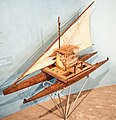Portal:Oceans
The Oceans Portal
A portal dedicated to oceans, seas, oceanography and related topics
– Hover over image and scroll to middle for controls to see more selected panorama images –
Introduction
| Earth's ocean |
|---|
|
Main five oceans division: Further subdivision: Marginal seas |

The ocean is the body of salt water that covers approximately 70.8% of Earth. In English, the term ocean also refers to any of the large bodies of water into which the world ocean is conventionally divided. The following names describe five different areas of the ocean: Pacific, Atlantic, Indian, Antarctic/Southern, and Arctic. The ocean contains 97% of Earth's water and is the primary component of Earth's hydrosphere and is thereby essential to life on Earth. The ocean influences climate and weather patterns, the carbon cycle, and the water cycle by acting as a huge heat reservoir. (Full article...)

A sea is a large body of salt water. There are particular seas and the sea. The sea commonly refers to the ocean, the interconnected body of seawaters that spans most of Earth. Particular seas are either marginal seas, second-order sections of the oceanic sea (e.g. the Mediterranean Sea), or certain large, nearly landlocked bodies of water. (Full article...)
Oceanography (from Ancient Greek ὠκεανός (ōkeanós) 'ocean' and γραφή (graphḗ) 'writing'), also known as oceanology, sea science, ocean science, and marine science, is the scientific study of the ocean, including its physics, chemistry, biology, and geology. (Full article...)
Selected article -

A seamount is a large submarine landform that rises from the ocean floor without reaching the water surface (sea level), and thus is not an island, islet, or cliff-rock. Seamounts are typically formed from extinct volcanoes that rise abruptly and are usually found rising from the seafloor to 1,000–4,000 m (3,300–13,100 ft) in height. They are defined by oceanographers as independent features that rise to at least 1,000 m (3,281 ft) above the seafloor, characteristically of conical form. The peaks are often found hundreds to thousands of meters below the surface, and are therefore considered to be within the deep sea. During their evolution over geologic time, the largest seamounts may reach the sea surface where wave action erodes the summit to form a flat surface. After they have subsided and sunk below the sea surface, such flat-top seamounts are called "guyots" or "tablemounts".
Earth's oceans contain more than 14,500 identified seamounts, of which 9,951 seamounts and 283 guyots, covering a total area of 8,796,150 km2 (3,396,210 sq mi), have been mapped but only a few have been studied in detail by scientists. Seamounts and guyots are most abundant in the North Pacific Ocean, and follow a distinctive evolutionary pattern of eruption, build-up, subsidence and erosion. In recent years, several active seamounts have been observed, for example Kamaʻehuakanaloa (formerly Lōʻihi) in the Hawaiian Islands. (Full article...)
Interesting facts -
- A "rain of fish" (a tornado that travels over the ocean, sucks up fish and then drops them over villages) is a common theme appearing in Honduran art - part of the culture of Honduras.
- The container vessel Hansa Carrier spilled over 80,000 Nike shoes into the Pacific Ocean, and they were used by scientists to track ocean currents.
- The crustaceans known as giant isopods, which live in the depths of the Atlantic and Pacific Ocean, can grow up to 45 centimetres long.
Selected list articles and Marine habitat topics
| Marine habitats |
|---|
| Coastal habitats |
| Ocean surface |
| Open ocean |
| Sea floor |
- List of oceans
- List of ancient oceans
- List of seas
- List of circumnavigations
- List of cruise lines
- List of largest lakes and seas in the Solar System
- List of marine biologists
- List of marine ecoregions
- List of maritime explorers
- List of naval battles
- List of ocean liners
- List of oceanographic institutions and programs
- List of oldest surviving ships
- List of rogue waves
- List of seafood dishes
- List of submarine topographical features
Tasks
 |
Here are some tasks awaiting attention:
|
General images -
Related portals
In the news
- 31 January 2025 – 2025 Philippine espionage case, Territorial disputes in the South China Sea
- Philippine President Bongbong Marcos states that he is careful of possible surveillance of the country's air and naval bases as well as the movement of vessels supplying Philippine garrisons in the South China Sea following a series of arrests of suspected Chinese spies in the Philippines. (CNA)
- 22 January 2025 – Red Sea crisis
- The Houthis report that 25 crew members of the Japanese-operated roll-on/roll-off ship Galaxy Leader, including many foreign nationals, are released to Oman, with the Houthis citing support for the 2025 Israel–Hamas war ceasefire as the reason for release. (BBC)
- 22 January 2025 – Red Sea crisis, Yemeni civil war
- U.S. President Donald Trump re-designates the Yemeni Houthi movement as a foreign terrorist organization. (The Hill)
- 16 January 2025 – Red Sea crisis
- The leader of the Houthis Abdul-Malik al-Houthi announces that the group will monitor the implementation of the Israel–Hamas ceasefire agreement and continue its attacks on vessels and on Israel if the ceasefire is breached. (Middle East Monitor)
- 15 January 2025 – Red Sea crisis
- Yemen's Houthi movement claims that it launched a missile attack targeting the USS Harry S. Truman aircraft carrier and accompanying warships of the United States Navy in the Red Sea. (Anadolu Agency)
WikiProjects
Topics
Categories
Associated Wikimedia
The following Wikimedia Foundation sister projects provide more on this subject:
-
Commons
Free media repository -
Wikibooks
Free textbooks and manuals -
Wikidata
Free knowledge base -
Wikinews
Free-content news -
Wikiquote
Collection of quotations -
Wikisource
Free-content library -
Wikiversity
Free learning tools -
Wiktionary
Dictionary and thesaurus
Admiralty law
| Admiralty law |
|---|
| History |
| Features |
| Contract of carriage/Charterparty |
| Parties |
| Judiciaries |
| International conventions |
| International organizations |
Need assistance?

Do you have a question about oceans, seas or oceanography that you can't find the answer to? Consider asking it at the Wikipedia reference desk.
External media

- World Ocean Database and World Ocean Atlas Series – from the U.S. National Centers for Environmental Information, National Oceanic and Atmospheric Administration. Includes the World Ocean Atlas.
- European Atlas of the Seas – the European Atlas of the Seas, from the European Commission
- NOAA Research – NOAA research news, Oceanic and Atmospheric Research (OAR)
- Ocean Research – from The World Ocean Observatory
- Ocean Biodiversity Information System – "a global open-access data and information clearing-house on marine biodiversity for science, conservation and sustainable development"









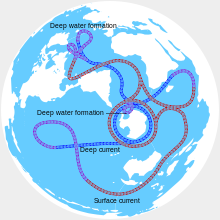













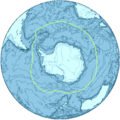


![Image 16"Terres Australes" [sic] label without any charted landmass (from Southern Ocean)](http://upload.wikimedia.org/wikipedia/commons/thumb/8/8e/Geography_world_map.jpeg/120px-Geography_world_map.jpeg)













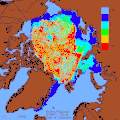
















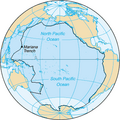






![Image 56An exclusive economic zone (EEZ) map of the Pacific which excludes non-tropical islands.[why?] (from Pacific Ocean)](http://upload.wikimedia.org/wikipedia/commons/thumb/b/bc/Map_of_the_Exclusive_Economic_Zones_of_the_Pacific_Ocean.png/120px-Map_of_the_Exclusive_Economic_Zones_of_the_Pacific_Ocean.png)








